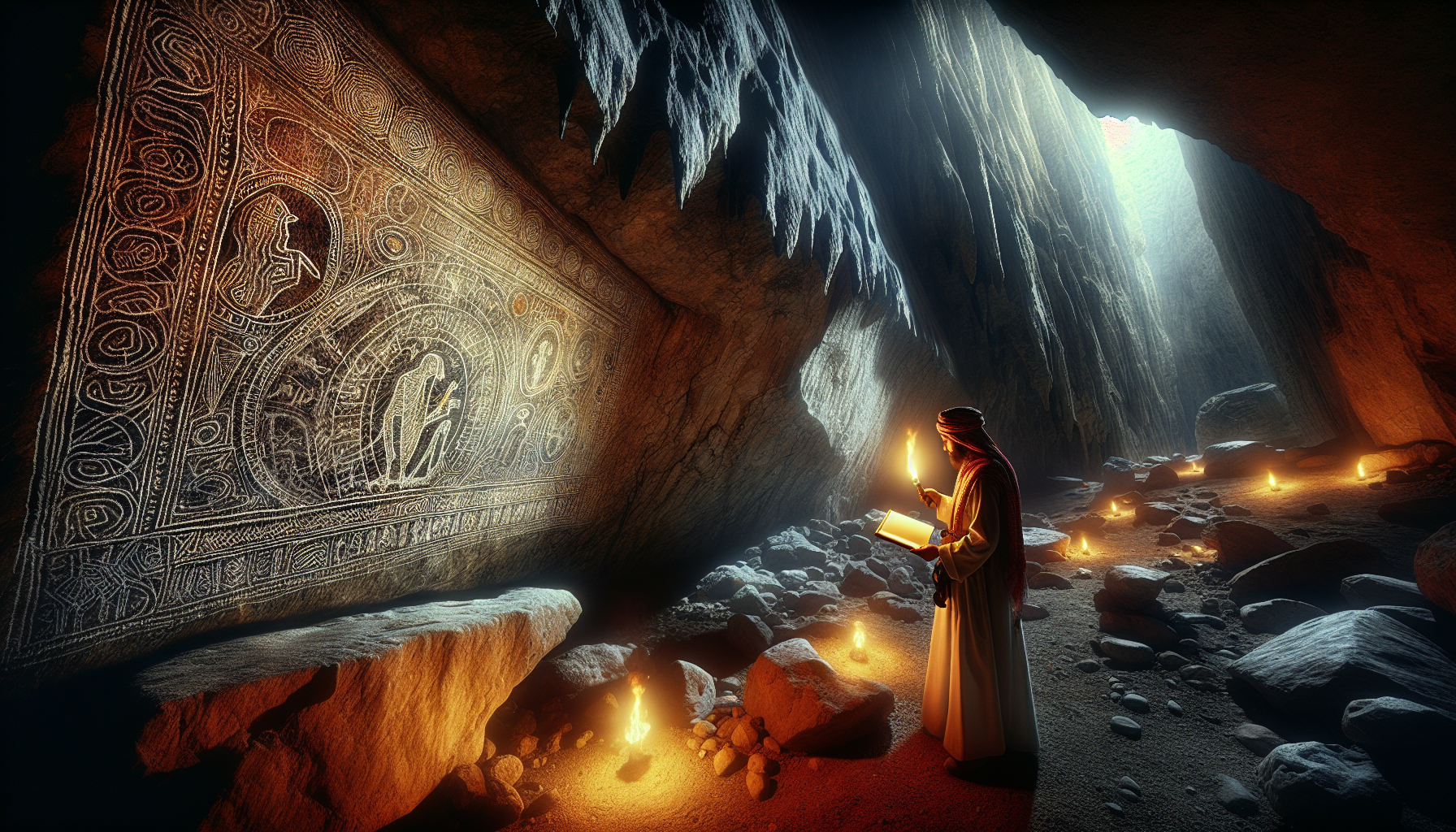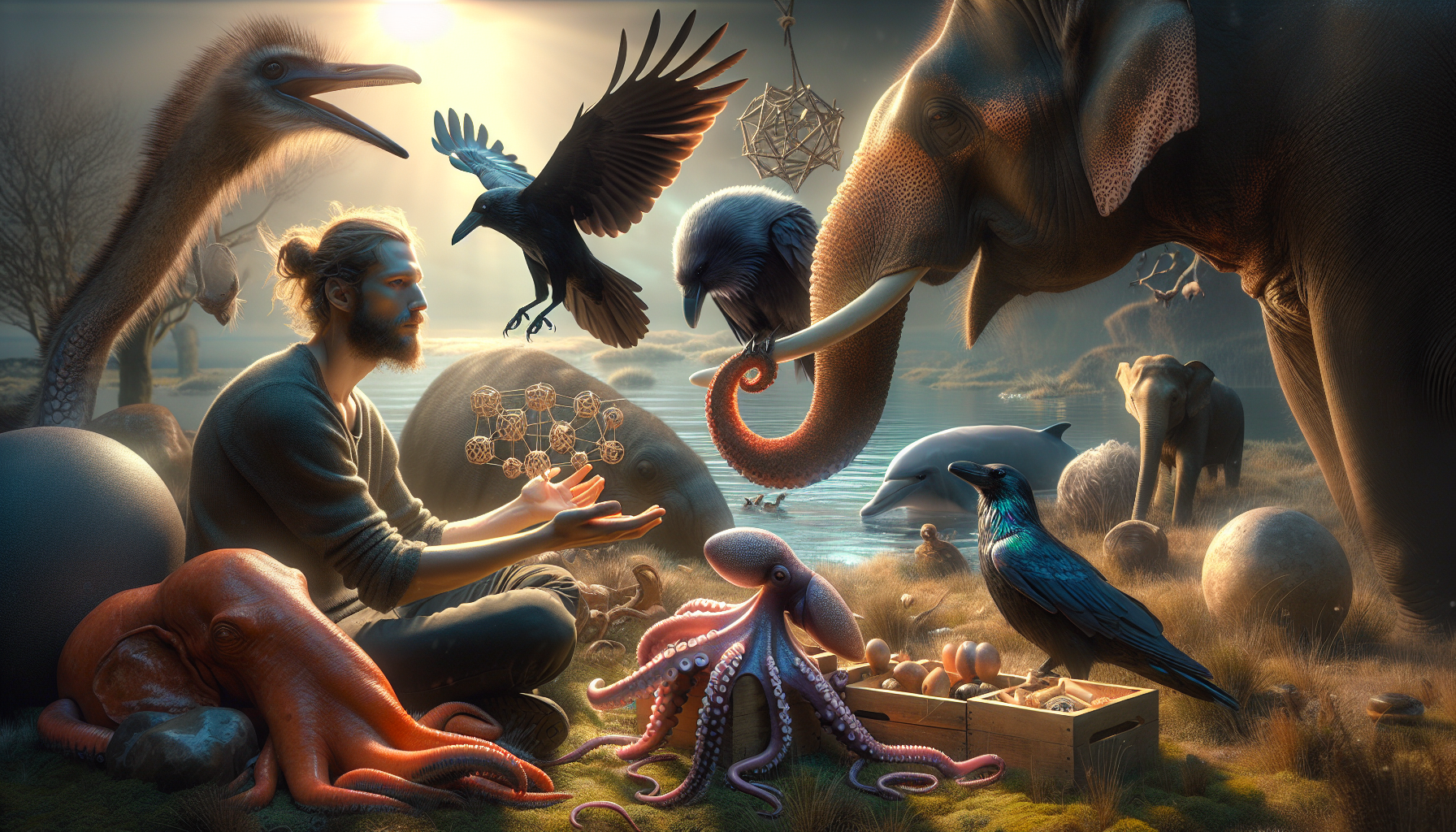Hidden deep within the embrace of ancient caves lies a world that has captivated the human imagination for centuries. These subterranean sanctuaries, sculpted by time and nature, are not only geological marvels but also repositories of humanity’s earliest artistic expressions. Welcome to the enigmatic realm of entoptic patterns—those intricate, mesmerizing designs that our ancestors etched and painted onto cave walls, leaving behind a legacy that continues to intrigue and inspire us today. 🌌
Our journey into the heart of these ancient wonders begins with understanding what entoptic patterns are and why they hold such a significant place in the study of human history. Entoptic phenomena refer to visual effects whose source is within the eye itself, rather than the external environment. These patterns—zigzags, grids, spirals, and dots—are often experienced in altered states of consciousness, such as those induced by meditation, sensory deprivation, or certain psychoactive substances. But what compelled our ancestors to reproduce these internal visions on the walls of their dimly lit dwellings? Were they mere artistic expressions, or did they serve a deeper, perhaps spiritual, purpose? 🌀
In exploring these mysteries, we will delve into the fascinating intersection of art, archaeology, and neuroscience. We’ll examine the latest research suggesting that entoptic patterns might not only represent personal visions but could also be a shared experience among early humans, potentially serving as a universal language transcending cultures and continents. From the Paleolithic caves of Europe to the rock shelters of Africa and beyond, these patterns emerge as a testament to a common thread in human cognition—a glimpse into the minds of our distant ancestors.
As we venture further, we’ll uncover the cultural and ritualistic significance these patterns held for ancient societies. Were they part of shamanic practices, guiding individuals on spiritual journeys? Did they serve as maps or records of celestial phenomena? Or perhaps they were early attempts to communicate with otherworldly entities, bridging the gap between the tangible and the ethereal. By examining archaeological evidence and drawing on insights from anthropology and cognitive science, we’ll piece together the puzzle of how and why these patterns came to be.
Finally, we’ll reflect on the legacy of entoptic patterns in today’s world. How do they influence modern art and design? What can they teach us about the universality of human experience and our innate drive to understand the unknown? As we peel back the layers of time, we invite you to embark on this journey with us, as we unveil the mysteries of entoptic patterns and rediscover the ancient wonders hidden in caves. 🗝️
The Enigmatic World of Entoptic Patterns
The term “entoptic patterns” might not be familiar to many, but it encompasses a fascinating aspect of visual perception that dates back to ancient times. These are visual phenomena originating within the eye itself, often perceived as bright dots or zigzags. While they may appear mundane at first glance, entoptic patterns hold significant historical and cultural value, particularly in the context of ancient cave art. Such patterns have been documented in numerous cave paintings, hinting at the spiritual and ceremonial significance they held for our ancestors.
Entoptic phenomena are typically noticed when someone looks at a bright, uniform field, such as the sky on a clear day. The viewer might see faint, drifting spots or even colorful, dynamic designs. These visual experiences are not reflections of the external world but rather interactions of light within the eye, showcasing how the brain interprets these signals. Historically, these patterns have been associated with altered states of consciousness, often induced by meditation or the consumption of psychoactive substances, leading to a deeper exploration of their significance in ancient cultures.
The role of entoptic patterns in prehistoric times extends beyond mere visual experiences. Archaeologists and anthropologists have proposed that these patterns played a role in the shamanistic traditions of early humans. By examining the artwork within caves, scholars suggest that entoptic patterns are not only prevalent but were also intentionally replicated by ancient artists, serving as a medium to depict their spiritual journeys and trance states. These patterns could represent a universal visual language that transcends geographical and cultural boundaries, potentially offering insights into the shared human experience.
Entoptic Patterns and Their Historical Context
The history of entoptic patterns is intertwined with human development and creativity. Researchers have found similarities between entoptic designs and cave paintings dating back thousands of years. These patterns often manifest as spirals, grids, or zigzag lines and can be seen in prominent cave sites such as Lascaux and Altamira. Their recurrence across various regions suggests a widespread recognition and integration of these patterns into the rituals and artistic expressions of ancient civilizations.
One intriguing aspect of entoptic patterns is their presence in the art of different cultures across time and space. Despite the vast distances separating ancient communities, the similarity in the entoptic motifs found in cave paintings across continents suggests a shared visual experience among early humans. This universality might indicate that such patterns were fundamental to human cognition and expression, providing a unique glimpse into the psychological landscape of our ancestors.
Moreover, the study of entoptic patterns offers valuable insights into the neurological processes of early humans. By understanding how these visual phenomena were perceived and interpreted, researchers can gain a deeper understanding of the cognitive evolution that has shaped human perception. These insights are crucial in piecing together the puzzle of how ancient societies viewed their world and the underlying principles that guided their artistic endeavors.
The Role of Entoptic Patterns in Ancient Cave Art
Cave art serves as a vital window into the past, revealing the thoughts and beliefs of early humans. The inclusion of entoptic patterns in these artworks points to their significance in prehistoric culture. These patterns are often found alongside depictions of animals and human figures, indicating their importance in conveying stories or rituals. The intentionality behind their inclusion suggests that entoptic patterns were not mere artistic embellishments but rather integral elements of the visual narrative.
Researchers propose that the presence of entoptic patterns in cave art is linked to shamanistic practices and altered states of consciousness. Shamans, as spiritual leaders of their communities, often sought to enter trance states to communicate with the spiritual realm. During these altered states, entoptic patterns may have served as visual manifestations of the shaman’s journey, guiding them through their visionary experiences and enabling them to bring back knowledge or healing for their community.
The depiction of entoptic patterns in cave art is not limited to a single geographic region, further supporting their widespread significance. From Europe to Africa and beyond, similar motifs appear in ancient artworks, underscoring their importance in the cultural fabric of early societies. This consistency highlights the potential role of entoptic patterns as a universal visual language, offering insights into the shared human experience across different cultures and epochs.
Understanding Entoptic Patterns Through Modern Science
Modern scientific inquiry into entoptic patterns provides a fascinating bridge between the ancient and contemporary understanding of these phenomena. Advances in neurology and psychology have shed light on how entoptic patterns are generated within the eye and interpreted by the brain. These studies reveal that entoptic phenomena are caused by the interaction of light with the retina, particularly the patterns of neuronal activity triggered by specific visual stimuli.
The exploration of entoptic patterns is not only limited to the realm of art and history but also extends into contemporary scientific research. Scientists and psychologists continue to study the mechanisms behind these patterns, examining how they manifest and their implications for our understanding of human perception. These efforts contribute to a broader comprehension of how the brain processes visual information, providing valuable insights into the intricacies of human cognition and creativity.
Moreover, modern technology allows us to simulate entoptic patterns, offering a glimpse into the visual experiences of our ancestors. Through virtual reality and computer-generated simulations, we can explore these phenomena in controlled settings, providing valuable data for researchers and enthusiasts alike. This intersection of ancient art and modern science enriches our appreciation of entoptic patterns, bridging the gap between the past and present.
Comparative Analysis of Entoptic Patterns in Different Cultures
Entoptic patterns, while rooted in universal human perception, exhibit fascinating variations across different cultures and epochs. By examining the similarities and differences in these patterns, researchers can gain a deeper understanding of their cultural significance and the contexts in which they were employed. Such comparative analysis offers a unique lens through which to explore the rich tapestry of human expression and creativity.
For instance, the geometric patterns found in Aboriginal Australian art bear striking resemblances to entoptic motifs seen in European cave paintings. Despite the geographical distance and cultural differences, these patterns suggest a shared visual language that transcends regional boundaries. This convergence of visual motifs across different cultures highlights the potential universality of entoptic patterns and their role in human cognition and expression.
The following table provides a comparative overview of entoptic patterns observed in different cultural contexts:
| Region | Common Patterns | Associated Practices |
|---|---|---|
| Europe | Spirals, zigzags, grids | Shamanistic rituals, cave art |
| Australia | Dots, circles, wave-like lines | Dreamtime narratives, spiritual ceremonies |
| Africa | Geometric shapes, spirals | Ritualistic art, community storytelling |
Such comparative studies not only enhance our understanding of entoptic patterns but also illuminate the interconnectedness of human cultures through shared visual expressions. By exploring these connections, we can appreciate the richness and diversity of human creativity while recognizing the common threads that bind us together across time and space.
Exploring Entoptic Patterns Today
Today, entoptic patterns continue to captivate and inspire artists, scientists, and enthusiasts alike. Their enduring appeal lies in their ability to bridge the gap between art and science, offering a unique lens through which to explore the intricacies of human perception and creativity. Modern interpretations of entoptic patterns can be found in various artistic expressions, from digital art to immersive installations, showcasing their timeless relevance.
Artists often draw inspiration from entoptic patterns, incorporating them into contemporary works that explore the boundaries of perception and consciousness. These patterns serve as a reminder of the deep connection between visual perception and human creativity, offering a glimpse into the shared experiences that have shaped human culture throughout history.
Furthermore, the study of entoptic patterns continues to advance our understanding of the human mind. As scientists delve deeper into the neurological mechanisms behind these phenomena, new insights emerge, enhancing our knowledge of how the brain processes visual information. These discoveries not only contribute to the field of neuroscience but also enrich our appreciation of the complex interplay between perception and art.
For those interested in further exploring the fascinating world of entoptic patterns, consider watching the following video: Exploring Entoptic Phenomena (YouTube) by Visual Culture Channel. 🎥

Conclusion
Unveiling the mysteries of entoptic patterns within the ancient wonders hidden in caves has led us on a fascinating journey through the depths of history, art, and human consciousness. This exploration has revealed not only the intricate relationship between neurological phenomena and ancient art but also the profound ways in which early humans interacted with their environment and expressed their understanding of the world around them.
Throughout this article, we have delved into the concept of entoptic phenomena—visual experiences that originate within the human eye and brain, rather than from external visual stimuli. These phenomena are universal, transcending cultures and epochs, and have been instrumental in shaping some of the earliest forms of artistic expression known to humanity. By examining the evidence found in cave art across various locations, we uncovered how these internal visions were externalized onto cave walls, thus providing a canvas for our ancestors to communicate their inner experiences and understandings of the world.
One of the key insights gleaned from this investigation is the realization that cave art, often perceived merely as primitive or simplistic, is actually a sophisticated manifestation of human cognition and perception. The geometric patterns, dots, zigzags, and spirals frequently found in ancient cave paintings are not random or decorative but are deeply rooted in the neurological makeup of human beings. These patterns represent a shared human experience that is as relevant today as it was thousands of years ago, linking us to our ancestors in a profound and tangible way.
Moreover, we have explored the various theories proposed by scholars regarding the purpose and significance of these entoptic patterns in cave art. Some suggest they were part of shamanistic rituals, serving as a bridge between the material and spiritual worlds. Others propose that these patterns were educational tools or mnemonic devices, aiding in the transmission of knowledge across generations. Regardless of their exact purpose, it is clear that these artworks were central to the cultural and spiritual lives of the people who created them.
Understanding these ancient expressions is not only an academic exercise but also a reminder of the enduring capacity for creativity and imagination inherent in all humans. It challenges us to look beyond the surface and appreciate the depth of connection and communication possible through art, even across millennia. This realization reinforces the importance of preserving these historical sites, ensuring that future generations can continue to learn from and be inspired by these remarkable cultural treasures.
In conclusion, the study of entoptic patterns in ancient cave art is a testament to the ingenuity and creativity of early humans. It highlights the complex interplay between biology, culture, and art, offering us a window into the minds of our distant ancestors. By understanding these connections, we gain a deeper appreciation for the shared human experience and the ways in which art serves as a bridge across time and space.
As we reflect on these insights, I encourage you, dear reader, to think about how these ancient expressions resonate with your own experiences and perceptions. How might you incorporate the lessons of our ancestors into your own life, whether through creativity, exploration, or a renewed appreciation for the art and nature around you? 🌍🖌️
I invite you to share your thoughts and insights in the comments below. Let us continue this dialogue and contribute to the collective understanding of our shared human heritage. If you found this article enlightening, please share it with others who may be intrigued by the mysteries of our past. Together, we can foster a deeper appreciation for the wonders of human history and the enduring power of art.
For further reading on this topic, I recommend exploring the following resources:
– The British Museum’s section on prehistoric art British Museum
– A comprehensive study of entoptic phenomena in art ResearchGate
– The role of shamanism in prehistoric art National Geographic
These links will provide you with more detailed information and insights into the fascinating world of ancient art and entoptic phenomena. Thank you for joining us on this journey through time. Let’s continue to unravel the mysteries of our past and find inspiration for our future.
Toni Santos is a visual storyteller and cognitive explorer whose work delves into the mental landscapes of ancient cultures—revealing how different civilizations perceived reality, memory, and meaning long before modern psychology existed. Through symbolic imagery and narrative inquiry, Toni brings to life the divergent ways of thinking that shaped lost worlds.
His creative path is guided by a fascination with non-linear logic, oral cosmologies, and the mythic frameworks that once guided decision-making, emotion, and identity. From memory temples carved in stone to visual languages encoded in textiles, every piece Toni creates reflects the vast cognitive diversity of the human story.
With a foundation in visual design and cultural semiotics, Toni blends analytical depth with artistic expression. His work goes beyond historical reconstruction—it reawakens the embodied, intuitive, and ritual-based intelligence of ancient minds, inviting us to question the assumptions of modern thought.
As the mind behind Vizovex, Toni curates visual studies, essays, and immersive content that explore forgotten epistemologies—ways of knowing that connected people to myth, land, and each other in profoundly different ways.
His work is a tribute to:
The symbolic intelligence of pre-modern cultures
The neural diversity embedded in ancient rituals and storytelling
The deep memory systems that shaped identity and perception
Whether you’re a researcher, an artist, or a seeker of hidden wisdom, Toni invites you to enter a space where cognition is culture, and where the past speaks through signs, cycles, and symbols—one myth, one memory, one mind at a time.





